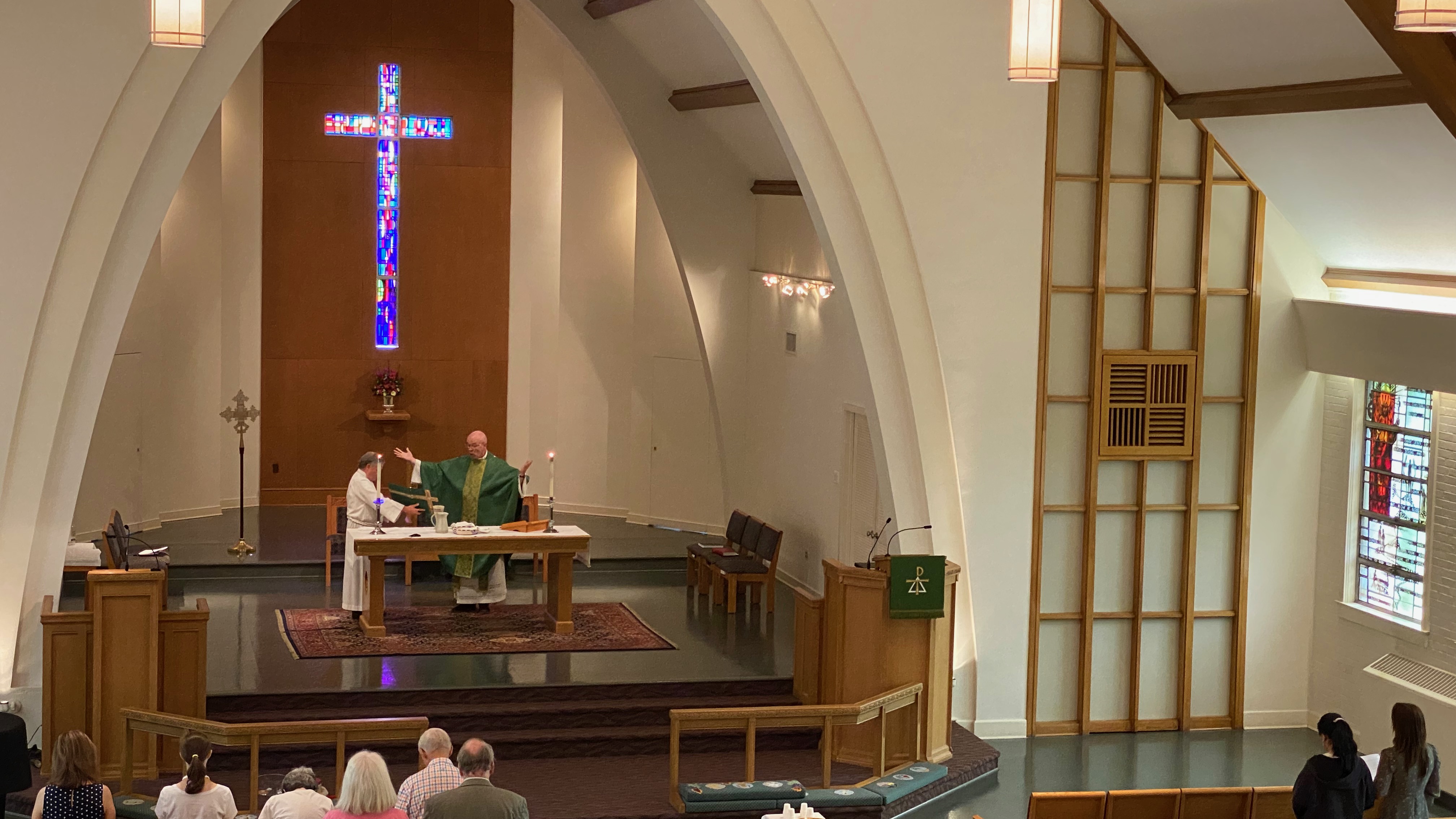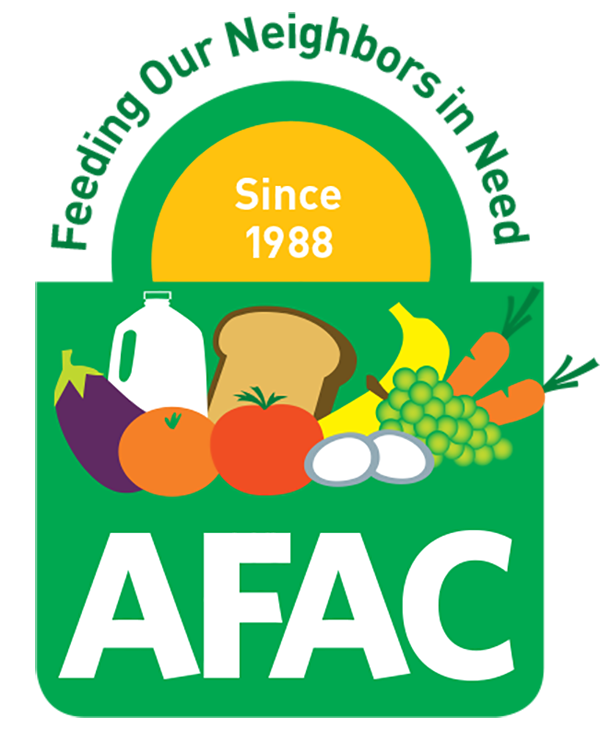One of those beloved stories, of course, is the Road to Emmaus, when the risen Christ was made known to two disciples in the breaking of bread. “When he was at the table with them, he took bread, blessed and broke it, and gave it to them. Then their eyes were opened, and they recognized him; and he vanished from their sight.” (Luke 24:30-31) A central message of this story is that the risen Christ was first recognized and known in Luke in the act of breaking bread, which would become for us the Eucharist. We still know to this day the risen Jesus in this breaking of bread.
Moreover, in Acts, the second volume of a two-volume set written by Luke, the coming of the Holy Spirit on the Day of Pentecost ultimately had the effect of birthing a new order, that of basic communal Christian practice: “They devoted themselves to the apostles’ teaching and fellowship, to the breaking of bread and the prayers.” Thus, what would become known as the Eucharist was among the gifts generated by the Spirit’s coming on Pentecost.
In a popular Christian mindset, the Holy Spirit is all about free-wheeling, serendipitous activity and breaking free of scripts. While it is true that the coming of the Spirit on Pentecost disrupted religious business as usual, it is also true that the Holy Spirit was very much integral to bringing order out of chaos. This was true at creation – “In the beginning when God created the heavens and the earth, the earth was a formless voice and darkness covered the face of the deep, while a wind from God swept over the face of the waters. Then God said, ‘Let there be light;’ and there was light.” (Genesis 1:1-13) But it is also true that the events recorded in Acts 2 are all about birthing orderly life in the church, not just serendipitous, unscripted activity.
And one of those orders is the holy Eucharist, through which, to state it again, we continue to know the risen Christ just as those two followers recognized Christ during their Emmaus journey. The Eucharist, thus, continues to be one of the means through which the Holy Spirit reliably works to generate and renew our faith. Lutherans gravitate toward the objective means of the Spirit’s activity, known as gifts that come from God and do not well up in ourselves and our more subjective experience. The Eucharist, centered in tangible, objective, edible gifts of bread and wine, is one such gift which we receive from without to take within.
Think also of the account of the coming of the Holy Spirit in the Gospel of John. There the Spirit’s coming happens as a crucial dimension of one of Jesus’ appearances to the disciples after the resurrection. “When it was evening on that day, the first day of the week, and the doors of the house where the disciples had met were locked for fear of the Judeans, Jesus came and stood among them and said, ‘Peace be with you.’ After he said this, he showed them his hands and his side. Then the disciples rejoiced when they saw the Lord. Jesus said to them again, ‘Peace be with you. As the Father has sent me, so I send you.’ When he had said this, he breathed on them and said to them, ‘Receive the Holy Spirit. If you forgive the sins of any, they are forgiven them; if you retain the sins of any, they are retained.’” (John 20:19-23) In John, the Holy Spirit is very much the spirit of Jesus, whose very breath in resurrected flesh marks the in-breaking of the Spirit and a new age when the Spirit will enliven the whole Christian community as the body of Christ, the church, and “will guide [them] into all the truth.” (John 16:13a)
The Spirit of Jesus empowers the reconciling, forgiving ministry of what would become the church. That the Spirit came via Jesus’ breath in John’s gospel, generated from the living, breathing body of the resurrected Christ, helps us recall the Eucharistic teaching found in John, chapter six: “I am the living bread that came down from heaven. Whoever eats of this bread will live forever; and the bread that I will give for the life of the world is my flesh…. Very truly, I tell you, unless you eat the flesh of the Son of Man and drink his blood, you have no life in you. Those who eat my flesh and drink my blood have eternal life, and I will raise them up on the last day; for my flesh is true food and my blood is true drink. Those who eat my flesh and drink my blood abide in me, and I in them. Just as the living Father sent me, and I live because of the Father, so whoever eats me will live because of me. This is the bread that came down from heaven, not like that which your ancestors ate, and they died. But the one who eats this bread will live forever.” (John 6:51, 53-58) In short, the Spirit’s coming in John is quite fleshly, relates significantly, I believe, to the living bread that Jesus promises in his body, and finds continued expression in our own communal, bodily celebrations of the Lord’s Supper.
An important feature of the prayer of thanksgiving at the table is the epiclesis, namely, that part of the prayer that is the invocation of the Spirit who works via the word in connection to the gifts of bread and wine amidst Christian assembly to make Christ’s real presence known to us in faith. These are the words of epiclesis that we will hear this Sunday on the Day of Pentecost when we will give thanks at the table as part of our return to Eucharistic feasting – let these words serve as prayerful anticipation for you even now as you read them:
O God of resurrection and new life:
Pour out your Holy Spirit on us
and on these gifts of bread and wine.
Bless this feast.
Grace our table with your presence.
Come, Holy Spirit.
Reveal yourself to us in the breaking of the bread.
Raise us up as the body of Christ for the world.
Breathe new life into us.
Send us forth,
burning with justice, peace, and love.
Come, Holy Spirit.
This prayerful invocation of the Spirit beautifully sums up what the Holy Spirit does in the sacramental meal and names its effects in enlivening us for the work in the world that God has entrusted to us.
Having engaged these reflections, I pray that you now have a better sense of the appropriateness of our returning to the celebration of Holy Communion on the Day of Pentecost, a fulcrum moment between Eastertide and Ordinary Time in our life together as church. Therefore, I warmly invite you: join us outdoors this Sunday at 9:30 am on the parsonage side of the church. Come, let us break our yearlong fast to feast together on Jesus’ real presence in the power of the Spirit working through the word and earthly gifts of bread and wine.
With joyful anticipation in Christ,
Pastor Jonathan Linman






